Craft-Mageddon: The Explosion of DIY Culture
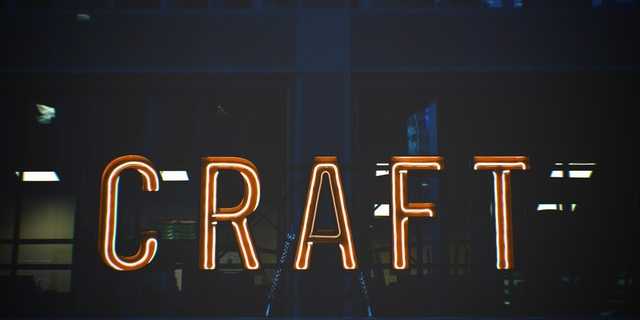
DIY, or “Do-It-Yourself,” culture has recently begun to explode on and offline with the creation of Etsy, various YouTube channels dedicated to DIY crafts, and farmer’s markets filled with handmade jewelry, knit scarves, and carved soap. However, it was the 1970s punk movement that embraced the spirit of DIY, turning into a bold statement that openly rejected consumer culture. Though being crafty seems to have become trendy, there are still groups nowadays that continue to embrace punk culture.
A Punk Perspective
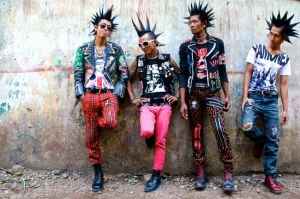
Usually, the stereotypical view of a punk is a rocker with a gravity-defying mohawk, large studded boots, and ebony leather jacket complete with a series of spiked bracelets, piercings, tattoos, and eyeliner. Though the punk movement is heavily rooted in a rich musical scene, the culture’s DIY aesthetic was kicked off by fanzines, or publications made by fellow community members with a focus on countering mainstream ideologies, while promoting DIY as a way to stop consuming a culture which is made already 1.
The punk fanzines were a call to action, a plea for people to make their own culture, and thereby their own happiness in most circumstances. Being punk meant you didn’t have to belong to a culture that made you an outcast. You could live on the fringe and build your own home there in whatever way you desired.
To be punk is not to shun our differences but rather to embrace them.
In addition to fanzines as a form of DIY press, the punk subculture thrived on independent record labels and DIY venues 2. Both were the lifeblood of the punk music genre where they operated separate from labels and places that may not host such a unique style of music. Naturally, many people were interested in such a rebellious voice on the current status quo and joined the subculture for its music, but also for its political outlook.
Punk DIY came from a place of necessity and craftiness. Countering the main culture left punks at a disadvantage for recruiting members, since they did not have the same pathways available as a mainstream, culturally-accepted community. So, punks had to make their own way, harkening back to the days of traditional artisans in Europe. They made their own subculture’s success through independent means, demonstrating that just because a dominant culture says this is how it is, it in fact does not have to be their way.
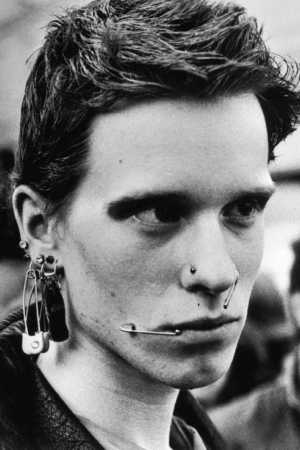
No better was the punk’s divergent attitude shown through their use of bricolage, or the taking of an object known for one purpose and transforming that use into something new. For instance, punks would take safety pins and wear them as earrings. While looking impractical to most of society, safety pin earrings directly showed defiance of the norm and a celebration of innovation.
Punks may have an unconventional aesthetic to the typical observer, but it cannot be denied that the counterculture had major impacts on the creation of a DIY mindset in a world that had started to pull away from the pride of craftsmanship.
Punk Posers or Affluent Artisans?
Nowadays when people think of DIY, it may conjure up images of handcrafted goods sold at farmer’s markets or the online shop called Etsy. They could also think of popular YouTube channels, such as 5-Minute Crafts. So, the question becomes whether these trendy DIY avenues continue the spirit of the punk movement’s counter-cultural viewpoint or have gone the exact opposite way as a counter to punk’s rejection of the norm.
At first glance, these new DIY ventures makes it seem as though they are keeping the soul of do-it-yourself independence alive; however, with their growing popularity, such creations can be seen as DIY posers. Essentially, new DIY only appears to take the spirit of true punk-inspired DIY and transform it from a rebellious separation to a trendy mainstream activity.
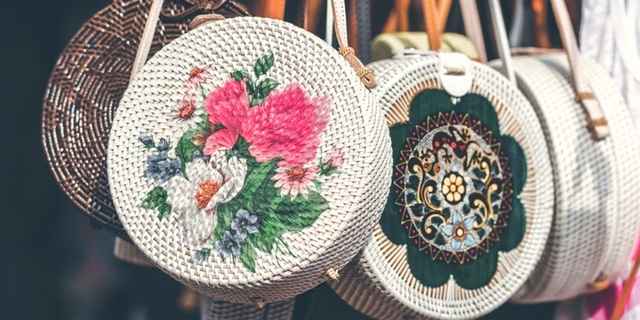
The above is especially true when one thinks about YouTube. Relevancy and currency is key on the platform, so when a creator realizes the trend happening where more and more people desire to buy locally-made and/or handcrafted items or desire to make products for themselves, that YouTuber will likely hop on the bandwagon and start filming tutorials that they estimate will receive the most views.
Take 5-Minute Crafts for instance. The YouTube channel has almost 60 million subscribers, near 3,500 uploads, and over 15 billion views on their channel. Their videos typically range from 10-20 minutes of content filled with small craft tutorials and “life hacks.” Unfortunately, real life attempts to recreate the channel’s crafts have not yielded similar results.
For example, YouTuber Jenna Marbles tried to create a jean chair in one of her videos based on a 5-Minute Craft, which ended in disaster as she showed just how difficult it was to make the chair in actuality and was left with several stuffing filled jean legs struggling to stay held together by staples. Furthermore, many comments on 5-Minute Crafts videos contain similar complaints about the validity of their crafts and hacks, as well as pointing out health and safety risks, such as the danger of putting toothpaste near the eyes 3.
Though YouTube does not seem to have the punk DIY outlook in most cases, farmer’s markets and Etsy seem to have a punk viewpoint to an extent. Instead of investing in large multinational companies, people can invest locally (i.e. a farmer’s market) or globally (i.e. Etsy) for high quality goods usually made by individuals or small shops.
Although these two DIY outlets are popular with a substantial amount of demographics, one could say that the punk movement was bound to be picked up by the dominant culture, as has happened with many other previously unacceptable counter-cultural practices. For instance, tattoos and piercings have gained much acclaim in the last few years, as the stigma has lessened and become a popular trend for the greater populace.
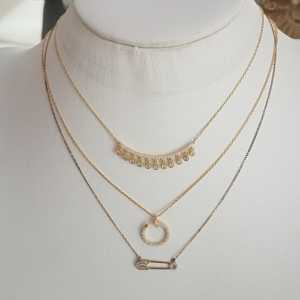
In an ironic way, countering a culture can potentially become a part of the culture when mainstream members engage in counter-bricolage, where a “bricolaged” item is once again taken and given another meaning. Counter-bricolage is exemplified by the taking of the punk safety pin as a defiant aesthetic statement and turning it into a gold jewelry accessory sold at fashionable stores.
Overall, the consensus may be that though some new DIY focuses on the pride of craftsmanship, the practices do not appear to have the same ideological foundation of rejecting the dominant culture through a rejection of and separation from mainstream cultural practices.
Don’t be a Drag, Just Do-It-Yourself
The spirit of the subversive punk DIY is not dead, however. The punk subculture is still around today, as well as many of its offshootings, like the goth subculture who also utilize DIY in quite a similar way.
Aside from these subcultures, stands one community that has the same resolve but demonstrates it in an aesthetically and culturally different way, which is none other than drag queens.
Drag queens have faced large discrimination for many of the previous decades until recent years with the establishment of Pride, which was founded from the groundwork (ex. Paris is Burning) of many members of the LGBTQ+ community from the past and present. RuPaul’s Drag Race could also be said to have had an impact by acting as a gateway for people to be exposed to the subculture 4.

Speaking of the popular television series, RuPaul’s Drag Race aptly demonstrates just how prevalent DIY is within the drag queen community. Contestants on the show will have to create their own outfits for almost all the challenges, which is usually true for the larger portion of the subculture. In addition to outfits, drag queens will make their own hip pads, style their own wigs, do their own make-up, and much more.
In an interview with CentSai, the drag queen Havana Fair stated, “As a filmmaker now and as a drag queen then, money is the biggest difficulty. But difficulty is the mother of innovation. That thing between your ears is the best thing you have. You may not have money, but with a little work, you can be creative.” 5.
Drag queens completely embody the heart of the punk movement, because they reject mainstream’s cultural norms by their aesthetic appearance and dramatic performances on stage. Thereby, drag queens keep true DIY alive and continue to be a thought-provoking voice against the dominant culture’s beliefs and values.
DIY Won’t Say Goodbye
In whatever way we enjoy DIY, whether that be making our own punk outfit for the next big concert or taking our handmade leather bracelets to sell at the local farmer’s market, do-it-yourself culture is here to stay. People have started to realize that everyone benefits through supporting each other and finding community through cultural practices based on independence and innovation.
The art of making something with your own hands, putting all your effort and soul into that project, reflects the will and desire to create that lives within the mind of the true artisan. An artisan who speaks through their creations and thus builds dialogue and thereby change.
Works Cited
- Triggs, Teal. “Scissors and Glue: Punk Fanzines and the Creation of a DIY Aesthetic.” Journal of Design History, vol. 19, no. 1, Spring 2006, pp. 69-83. Oxford Academic, academic.oup.com/. ↩
- Moran, Ian P. “Punk: The Do-It-Yourself Subculture.” Social Sciences Journal, vol. 10, no. 1, 2010, pp. 58-65. WestCollections, repository.wcsu.edu/. ↩
- Jessie Thorn. Comment on “37 SIMPLE BEAUTY AND NAIL HACKS YOU MUST KNOW.” 5-Minute Crafts, Aug 21 2019, https://www.youtube.com/watch?v=rFdY3QF_rIg. ↩
- Collins, K. Austin. “Paris Is Burning Is Back — And So Is Its Baggage.” Vanity Fair, 18 Jun. 2019, https://www.vanityfair.com/hollywood/2019/06/paris-is-burning-documentary-drag-jennie-livingston-interview/. ↩
- Brown, Kelly Meehan. “RuPaul’s Budget Race: How to Be a Drag Queen When You’re Broke.” CentSai, 01 Jun. 2019, https://centsai.com/earn-money/side-hustle/side-hustle-blogs/rupaul-budget-race-how-to-be-a-drag-queen/. ↩
What do you think? Leave a comment.











Great article. There’s something so gratifying about making a tangible thing with your own two hands…no matter how imperfect! I recently took up embroidery, and while it looks nothing like the pros, it makes me glad to see how far I’ve come personally. I think that’s truly a reflection of DIY culture.
I completely agree with you, Eden! I’m actually going to take up embroidery myself, because I’ve always loved hand sewing and like the idea of putting a part of yourself into your own clothing. Thanks for reading!
You enlightened me on a topic I previously knew nothing about! Thank you for this fascinating article.
Unfortunately, I think that the idea of DIY endeavors is starting to take on a comical meaning–at least, in my experience. I hear a lot more about DIY fails than I hear about DIY successes. It saddens me to think that something that began as a way of resisting conformity is now often referred to only in a joking way.
I never made the connection between DIY crafts and the punk movement or drag queens! Very interesting.
I was in bands as a kid and we put out our own 7 inches: it’s the way to go. This DIY/punk aesthetic is dying off now…this really moved me. Turn of Youtube and reality TV and make some noise!
We need to enable a culture where people can become more self-reliant, buy less stuff, and share ideas with others… Open and accessible bicycle collectives, makerspaces, and hackerspaces are a good start, but I’m wondering if anyone reading this comment has additional input or experience.
If you want to make art just please go do it, if you don’t have a scene make one, do what you want together or by yourself. Just go and make art… Even if it may suck.
DIY was there from the very beginning… I would even go as far back as the 50’s. Few musicians made any money from rock n’ roll.
My first experience with DIY punk was at wrangler studios, November 2017, I saw AJJ, it was an all ages show and that show changed my life, when I was screaming the lyrics as loud as I can and dancing around, there was something I’ve never felt before, it was a feeling you won’t get anywhere else.
I love everyone who helped make this community so widespread.
Remember 15 years ago running down to London to catch DIY punk weekender feat. Ghost Mice (who played outdoors). Now working on a dissertation about whether DIY punk ethics/community art workshops can dissolve capitalism. Will reference this article in it – thank you.
The DIY sentiment attached to Punks in the 70s is truly special and unique to that era. There were few big-budget campaigns advertising the new punk look. Rather, young punks had to look hard for inspiration and create the aesthetic themselves.
Is this what made the movement so appealing? The style wasn’t handed out on a plate. Those who wanted it had to be innovative and creative.
A very interesting and thought-provoking read, thank you!
Bless those punk bands and these people.
As a musician doing everything on my own with my band this is movement is very inspiring and motivational.
About a year ago, I started doing my own DIY Folk punk thing… Now I’m in four awesome bands, I’ve released so much music locally for free and I feel so content with my life
Being raised by a punk dad a hippie mom, this article resonates with me.
Just found DIY and the Folk Punk scene recently, and love it. here lies true individuality.
As an old punk it’s makes me so happy to see this movement growing so much because of love – love for each other and love for the music
This is a great piece. Thanks!
Very inspiring!
This article does a good job of capturing the culture and atmosphere that helped pull me out of my hopelessness and my apathy.
This article is incredibly insightful! I never knew that DIY was linked to punk culture and I love the various examples that you provide of appropriation (ie contemporary online DIY projects) versus embodiment and resisting dominant ideologies surrounding consumer culture (ie drag/Rupaul’s Drag Race). Well done!
Thanks for such an interesting article, I’ve always tended to think of DIY from a utility-based perspective, so this really opened my eyes as to how the act of personally crafting one’s own things is such an essential element in various parts of our culture (or counter-culture) and the development of our sense of self.
The day i learned about small punk shows and the diy punk community, is the day my life changed for ever.
I like how the culture is about passion and just doing it.
This reads like a first draft of a freshman’s Culture Studies essay. The notion of DIY being an antithesis to mainstream culture is fairly irrelevant and certainly the idea that it spawned primarily from punk culture is also a fallacy. Punk culture only offered an ironic, agitation, commodified form of it. DIY culture is far older, even timeless. As for bricolage, that’s conceptually different, in the same way as found art or Dada
Your comment does not do justice to your username.
A decent amount of people (at least in my experience) look down on DIY culture because of their own pure laziness and because they don’t understand what it truly is. This article could definitely help some people understand that DIY isn’t this preconceived notion of boringness that many people that I’ve come across have.
Very interesting article. Any counter culture faces being commodified by the dominant culture, and must in a way continue to re-invent the meaning of counter culture in order not to be subsumed completely. I would also point out that although made fun of by mainstream media, Burning Man was started by the same ideology of the Punks seeking to de-commodify and upset the normative.
A very interesting and thought provoking article. In fact a good starting point in the thought towards pursuing and promoting the DIY culture
The rise in DIY craft is not an extension of punk culture. The original punk ‘making do’, and re-crafting of cheap everyday objects is not the same as weaving strips of plastic bags to make a recycled basket. Punk was subversive and a counter-culture that reacted against growing conservatism. It shocked and challenged. While I see the argument put forward here it is far too tenuous for me. DYI trends are influenced by so many differnet things – being an extension or re-working of punk culture is far from my mind (and don’t forget – there is nothing knew about DYI – for centuries that’s all people had!)
An interesting article. 5-Minute Crafts I’ll need to see what is there, I did not know about this site.
I would say that I am a pretty crafty person and I never knew that it had these “punk” origins. This was an enlightening read and I think that DIY trends have shifted from these roots and taken on an identity of their own.
It’s a never-ending challenge for the contrarian that the unpopular will eventually become popular if it lands in the right hands. I absolutely cannot stand the fake DIYs and life-hacks from YouTube content farms. But I don’t really have a problem with fashion picking up punk trends. Fashion is cyclical, and it doesn’t stop the train of innovation from chugging along. It is sad that independent creators get trampled by the capitalist engine (that’s my second train analogy now), but in the end, we all have to make money. I have hope that big businesses will be taken over by the right people eventually.
As soon as the DIYer brings up the table saw, I stop watching the video and feel disappointed.